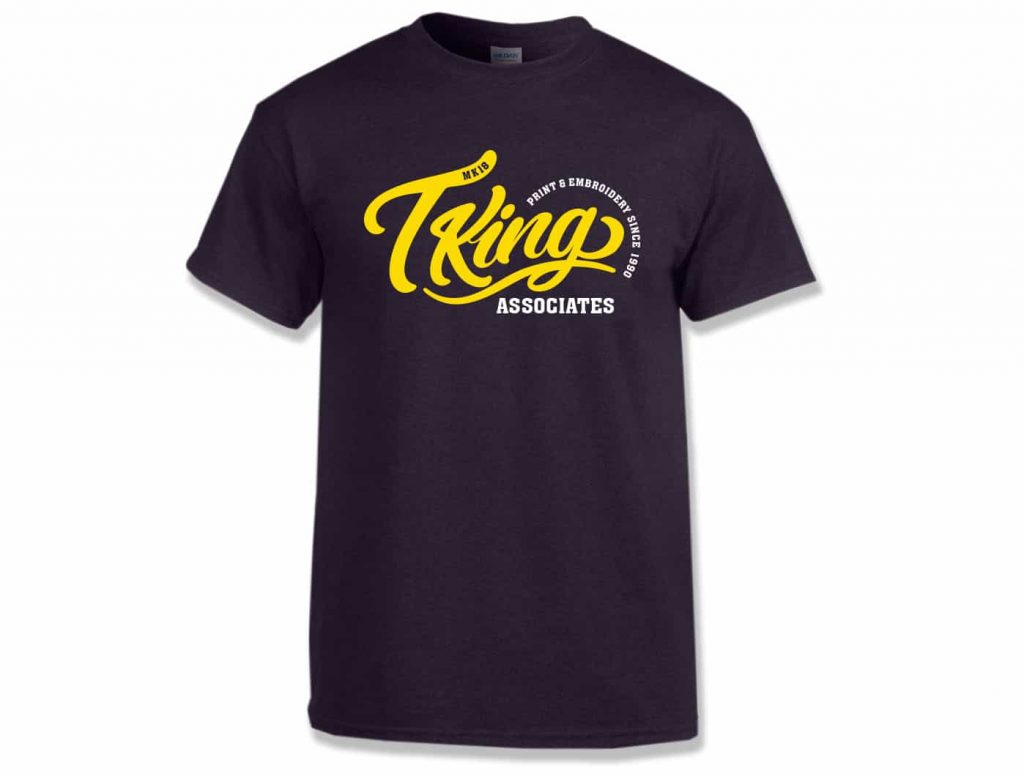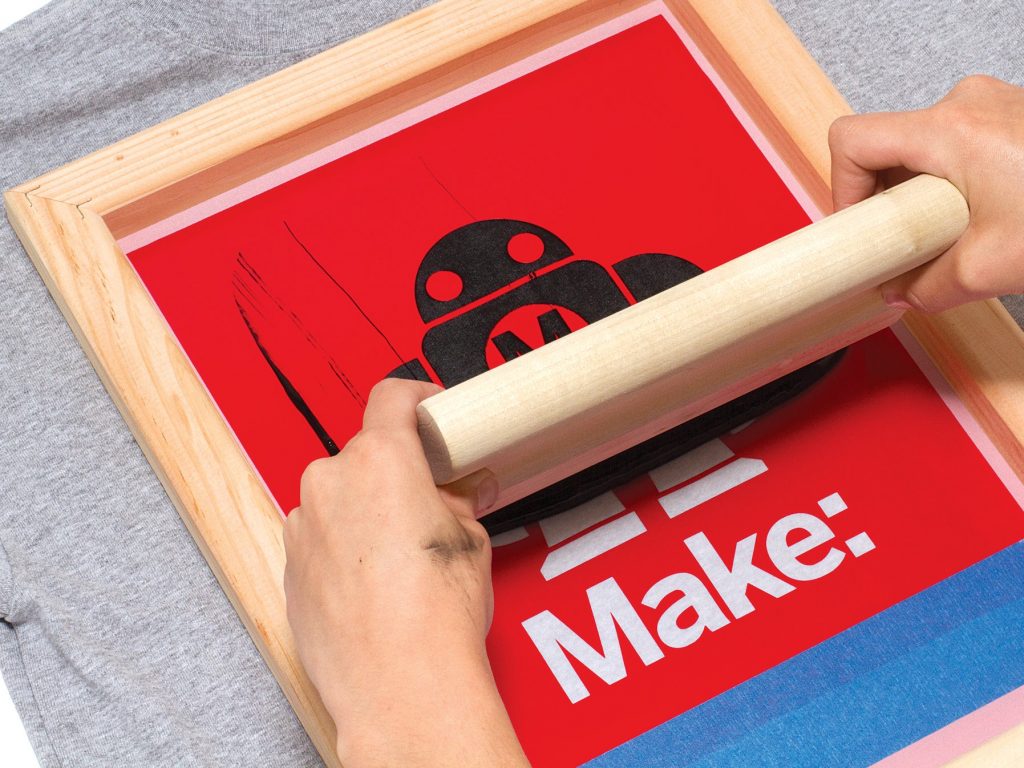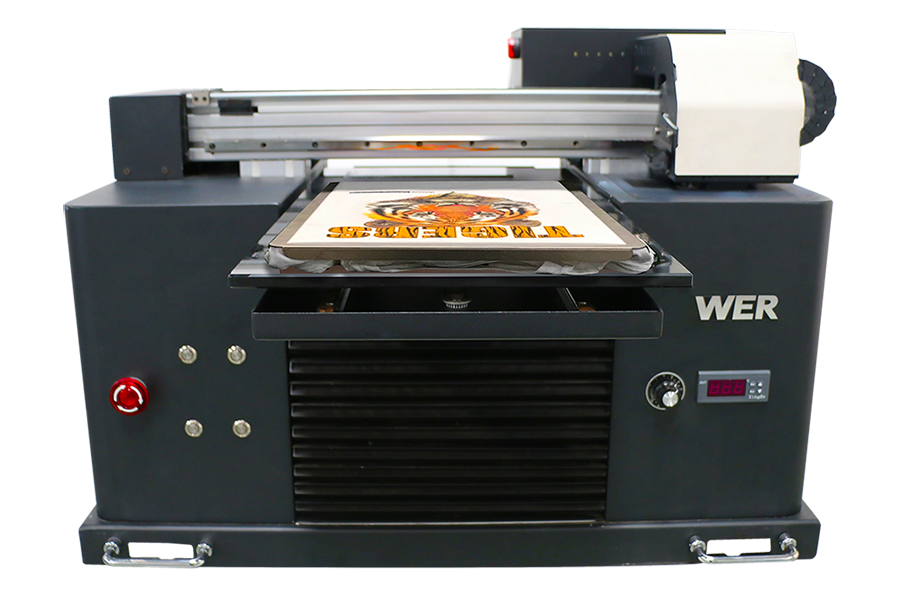DTG Vs Screen printing Choose the Right Apparel Printing Method for You

“I just want my t-shirts printed!”
You’ve probably heard this from someone starting their own t-shirt store. Perhaps you’ve even said it yourself.
The buzz you get from envisioning a design idea can wear off quickly once you’re faced with the more technical questions, the first one being—which apparel printing method should I choose?
There are quite a few options out there, but the two most popular are direct-to-garment (also known as DTG) and screen printing. Choosing the right one for your online business can be the first building block that leads to satisfied customers, saving costs, and being able to scale your business as it grows.
With so much at stake, it’s important to research your printing options by asking questions about the methods, such as:
Will my design work with it?
How cost-effective is it?
Is it eco-friendly?
In this article, we’ll look into the differences between DTG and screen printing, the designs they work best with, and how sustainable each technique is.

What is screen printing and how does it work?
What type of designs work best with screen printing?
Is screen printing eco-friendly?
Is screen printing the right choice for your business?
What is direct-to-garment printing and how does it work?![]()
 What type of designs work best with DTG?
What type of designs work best with DTG?
Is DTG printing eco-friendly?
Is DTG printing the right choice for your business?
What’s better: DTG or screen printing?
Choose your printing method wisely
What is screen printing and how does it work?
Screen printing is a printing method where ink is pushed through a woven screen (also called mesh stencil) onto fabric. The ink doesn’t soak into the fabric, but lays on top of the product.
With screen printing, a special screen has to be made for each element of your design. Once that’s done, the colors and elements of the design are applied layer by layer onto the garment. The more layers your design has, the longer it’ll take to print it and the thicker the design will feel on the product.
The long setup time is why screen printing is primarily used to print items in bulk. It’s not cost-effective to print only a t-shirt or two if it’s taken hours to create the stencils for your design.
What type of designs work best with screen printing?
Screen printing works best for solid graphics without small details. This basic typography, geometric designs, symbols, and shapes. That’s because making stencils for intricate designs is time-consuming and it’s difficult to get the details right during the printing process.
Since each color is applied separately, screen printing is also mostly used for designs with few colors. Print providers often limit how many colors you can have in your design, and usually no more than 9 are allowed.
Is screen printing eco-friendly?
As a store owner, you should also be aware of how your business affects the environment. That’s why it’s important to take into account the sustainability of each printing method.
Sellers who use screen printing usually order in bulk and then send out the items as the orders come in. That’s why there’s a chance of overproduction, which is one of the main problems the sustainable fashion movement is tackling.
If the products you screen-printed don’t get sold, they might end up in landfills or get burned, contributing to pollution.
What’s more, screen printing uses a lot of water and it’s often done with isolation inks that don’t biodegrade.
Is screen printing the right choice for your business?
Screen printing can be cost-effective for designs with simple graphics (ideally with only a couple of colors), but it requires upfront investments. Most third-party print services have order minimums that can be anywhere from 5 to 100 items.
The final price of your screen printing bulk order is based on the number of colors in your designs and the screens needed to print it. So screen printing can be financially challenging if you’re just starting out or want to experiment with designs.
Ordering in bulk also means you’ll have to figure out where to store the printed garments if you don’t want to have piles of clothing laying around your home or office. This limits how many designs you can offer on your store because each design will have to be printed in bulk.
Also consider whether you’ll be able to sell all items that get printed, so you wouldn’t contribute to textile waste. This can be difficult to predict for new business owners who don’t yet have an established customer base.
Some printing services will ask you to submit print files separated into layers of each color. They might ask you the color codes for inks they should use to print your design. So if you’re looking for an “upload your design and forget about the rest” type of experience, screen printing isn’t the right choice for you.
What is direct-to-garment printing and how does it work?
Direct-to-garment, or DTG, is a printing method that sprays the ink onto the garment. The ink then soaks into the fibers of the garment. It’s like printing on paper, but on clothing.
The main advantage of DTG is that it’s easy to print one-offs because there’s almost no setup time. And the price of dtg printer is cheap a lot.
With DTG, you can print customized logos if that’s what your customer requires.
What type of designs work best with DTG?
DTG printers offer a lot of color options which means you can print detailed designs and photo-realistic images with almost no color limitations. This is important for those businesses that want to try out various colors and designs.
The thing to avoid with DTG is transparencies. Elements that are less than 100% opaque don’t translate well in DTG printing—printers will attempt to make up the missing color by spreading the ink, causing the fabric to have a lot of gaps. That’s why it’s best to use solid colors or fake semi-transparency by half-toning.
Other than that, you can work with detailed designs and color patterns as much as you wish. For best results, we suggest creating graphic—it matches DTG printer color possibilities the best.
Is DTG printing eco-friendly?
DTG is a more sustainable fashion business model than screen printing. Mainly because printing one-offs allows businesses to avoid overproduction and textile waste. With 92 million tons of textile going to waste in the fashion industry each year, a business model like this is a game-changer.
Is DTG printing the right choice for your business?
Direct-to-garment printing is a hassle-free way to get the products ready for your customers.
With DTG, the entire design is printed in one go. And since DTG doesn’t have a color count, there’s no extra setup time to start printing, so your order gets fulfilled as soon as the print file comes through.
This printing model gives you the freedom to introduce new designs or enter new markets without losing any money. If the product doesn’t sell, you can discontinue or replace it.
What’s better: DTG or screen printing?
DTG and screen printing yield fine quality prints, but they differ in method and cost. DTG uses a printer to spray the ink into a garment, while screen printing layers the ink on top of the fabric. Most importantly, DTG enables order fulfillment on-demand with no upfront cost, while screen printed products are ordered in bulk.
Choose your printing method wisely
Whether you want to create and scale your apparel business using DTG or screen printing is completely up to you. Before you make your final decision, consider:
your brand image
the complexity of your designs
your product quantity needs
your willingness to invest in the stock upfront
If you’re looking for the easy way to successfully grow your business, DTG printer is your best bet. With this printing method, it’s easy to introduce new designs to your store risk-free, and you don’t have to worry about keeping stock.
Using DTG printer gives you more time to experiment with your product offering and marketing, which you can bring out the eco-friendly qualities of DTG printing.
| M | T | W | T | F | S | S |
|---|---|---|---|---|---|---|
| 1 | 2 | |||||
| 3 | 4 | 5 | 6 | 7 | 8 | 9 |
| 10 | 11 | 12 | 13 | 14 | 15 | 16 |
| 17 | 18 | 19 | 20 | 21 | 22 | 23 |
| 24 | 25 | 26 | 27 | 28 | 29 | 30 |
| 31 | ||||||
Recent Posts
- Ultimate Guide to UV Printing: Insider Tips and Tricks
- Before You Invest: Choosing a Large Format Flatbed Printer
- Maximizing Brilliance: Mastering UV Printer Settings for Optimal Media Reflectivity
- The advantages of using a WER UV printer for large format printing (2)
- Achieve Stunning Results in Home Décor and Architectural Design with UV Printer
Archives
- January 2025
- November 2024
- September 2024
- March 2024
- December 2023
- November 2023
- October 2023
- May 2023
- March 2023
- February 2023
- January 2023
- December 2022
- November 2022
- October 2022
- September 2022
- February 2022
- January 2022
- December 2021
- November 2021
- October 2021
- September 2021
- August 2021
- July 2021
- June 2021
- May 2021
- April 2021
- March 2021
- February 2021
- January 2021
- December 2020
- November 2020
- October 2020
- September 2020
- August 2020
- July 2020
- June 2020
- May 2020
- April 2020
- March 2020
- February 2020
- January 2020
- December 2019
- November 2019
- October 2019
- September 2019
- August 2019
- July 2019
- June 2019
- May 2019
- April 2019
- March 2019
- February 2019
- January 2019
- December 2018
- November 2018
- October 2018
- September 2018
- August 2018
- July 2018
- June 2018
- May 2018
- April 2018
- March 2018
- February 2018
- January 2018
- December 2017
- July 2016
- June 2016
Recent Posts
- Ultimate Guide to UV Printing: Insider Tips and Tricks
- Before You Invest: Choosing a Large Format Flatbed Printer
- Maximizing Brilliance: Mastering UV Printer Settings for Optimal Media Reflectivity
- The advantages of using a WER UV printer for large format printing (2)
- Achieve Stunning Results in Home Décor and Architectural Design with UV Printer
Recent Comments